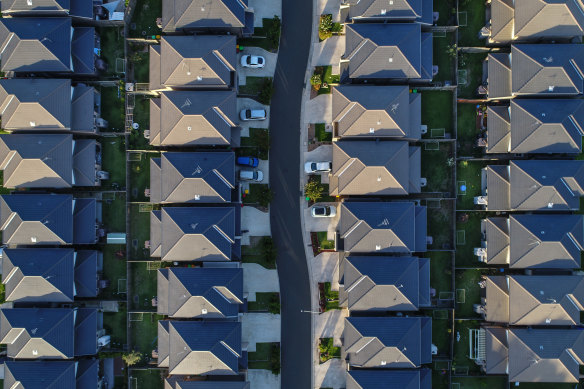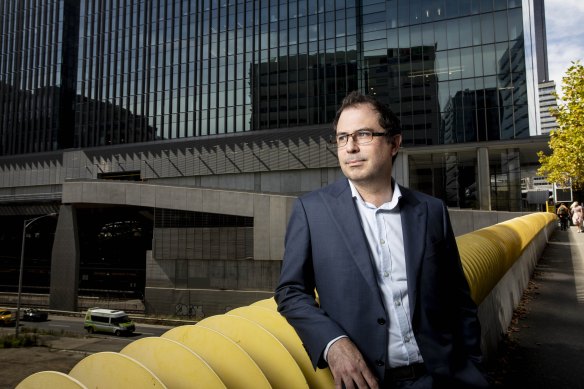- Exclusive
- Politics
- NSW
- Housing crisis
This was published 10 months ago
The shocking statistic that illustrates Sydney’s housing crisis
By Matt Wade
The number of new homes completed in Sydney during 2023 was 42 per cent lower than in 2018 as interest rate pressures and inflated building costs hampered residential construction.
Despite strong population growth and persistent claims the city is in the grip of a housing supply crisis, Sydney added just 32,600 new dwellings in the year to December 31, well short of the 56,500 new dwellings built in 2018.

Despite a housing supply crisis, Sydney added far fewer new dwellings in 2023 than it had five years earlier.Credit: Wolter Peeters
The number of new homes completed in Sydney was 25 per cent lower than in Melbourne, which added 43,400 new dwellings in 2023, estimates by consultancy KPMG show.
Terry Rawnsley, an urban economist at KPMG who undertook the analysis, said that although the number of new homes completed in Sydney during 2023 was 3.8 per cent higher than in 2022, it was not enough to meet the city’s needs.
“Rising interest rates are having a substantial impact on the market, cooling demand, and exacerbating existing pressures on the construction industry,” he said. “Elevated costs are also squeezing margins and moderating the pace of new developments.”
Rawnsley estimates more than 10,000 new residences in Sydney had been approved but had not been commenced at the end of September, exacerbating the city’s housing problems. About 85 per cent of the stalled projects were for apartments or townhouses.
Deeper structural factors were also dragging on the city’s housing supply, he said.
“A lack of prime sites was holding back new development in Sydney. The city’s peak in 2018 of 56,500 new dwellings came on the back of key CBD sites and locations like Green Square being developed at a rapid rate,” he said.

KPMG urban economist Terry Rawnsley: ″A lack of prime sites was holding back new development in Sydney.” Credit: Nine
Housing affordability problems, especially a shortage of rental properties, have roiled NSW politics during the past year. Premier Chris Minns has announced several policies to boost the supply of dwellings, including changes to planning rules. But those changes will have little effect in the short term.
Relatively weak residential building approvals in NSW during the past year mean the number of newly constructed homes in Sydney could be even lower in 2024 than in 2023.
Rawnsley estimates the city will complete just over 30,000 new dwellings in 2024, although this could rise to up to 33,000 should the rate of building approvals pick up and if building completion times improve.
Independent economist Chris Richardson said the failure to tackle Sydney’s housing affordability problems was eroding the economic competitiveness of NSW.
“We have just not approved enough housing, especially where people would like to be, and most notably, when we do approve it, we attach some very expensive conditions to that, meaning we deliver among the highest priced housing in the world,” he said.
Rising interest rates during the past 18 months and a sustained increase in building costs following the disruptions of COVID-19 and the Ukraine war had strained the balance sheets of many building firms.
But Rawnsley said more favourable conditions for the construction sector recently, including lower building costs, had given developers more confidence to start housing projects and reduce the current backlog.
Rawnsley said some of Melbourne’s geographical attributes had made it easier to lift housing supply there compared to Sydney.
“Melbourne’s ‘flat geography’, numerous CBD and inner-city development sites, along with ample, low-cost greenfield development fronts mean that it can produce more housing than Sydney, which has more challenging geography, fewer CBD and inner-city development sites, and more challenging greenfield areas,” he said.
Start the day with a summary of the day’s most important and interesting stories, analysis and insights. Sign up for our Morning Edition newsletter.